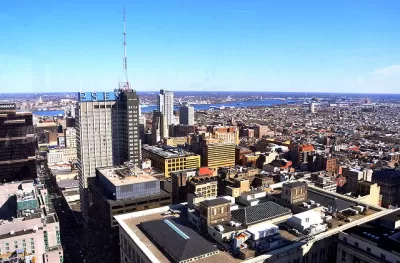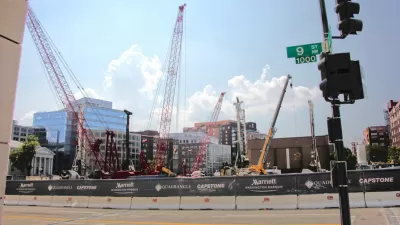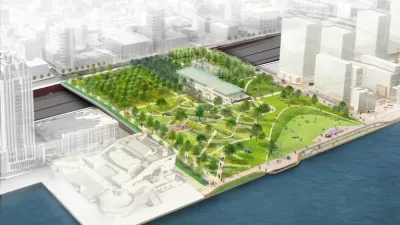A development project in Philadelphia is raising funds through a combination of Opportunity Zones benefits, federal tax credits, and crowdfunding.

Jared Brey reports on a mixed-use project in Northwest Philadelphia called Golaski Labs. Mosaic Development Partners did not pursue a more conventional investor-funding approach to raise the $7.2 million it needs for the project, says Brey:
Instead, the firm has developed a complex financing structure that will take advantage of New Markets Tax Credits, a small portion of equity offered through the crowdfunding service Small Change, and capital raised through the new Opportunity Zones tax incentive created as part of the Tax Cuts and Jobs Act passed at the end of 2017.
The project’s Opportunity Zone fund lets investors who meet minimum net worth or income thresholds invest capital gains income. “Opportunity Zones allow investors to avoid some taxes on capital gains income by investing them in projects or businesses located in low-income areas designated by states earlier this year, although it’s a federal tax incentive,” says Brey.
The equity crowdfunding is targeting a different investor demographic. In the past, Mosaic found bringing in investors from the communities where the firm’s projects are located to be a challenge, particularly because these tended to be less experienced investors.
“[Gregory] Reaves says the firm turned to crowdfunding as a way to create opportunities for small-time investors, hopefully including some from the neighborhood, to buy into the project,” reports Brey. He notes that the Small Change crowdfunding effort differs from Kickstarter or Indiegogo because the funding is actual investments with the potential for financial returns as well as losses.
FULL STORY: Crowdfunding and Opportunity Zones Joining Forces in Philadelphia Project

Study: Maui’s Plan to Convert Vacation Rentals to Long-Term Housing Could Cause Nearly $1 Billion Economic Loss
The plan would reduce visitor accommodation by 25,% resulting in 1,900 jobs lost.

North Texas Transit Leaders Tout Benefits of TOD for Growing Region
At a summit focused on transit-oriented development, policymakers discussed how North Texas’ expanded light rail system can serve as a tool for economic growth.

Why Should We Subsidize Public Transportation?
Many public transit agencies face financial stress due to rising costs, declining fare revenue, and declining subsidies. Transit advocates must provide a strong business case for increasing public transit funding.

How to Make US Trains Faster
Changes to boarding platforms and a switch to electric trains could improve U.S. passenger rail service without the added cost of high-speed rail.

Columbia’s Revitalized ‘Loop’ Is a Hub for Local Entrepreneurs
A focus on small businesses is helping a commercial corridor in Columbia, Missouri thrive.

Invasive Insect Threatens Minnesota’s Ash Forests
The Emerald Ash Borer is a rapidly spreading invasive pest threatening Minnesota’s ash trees, and homeowners are encouraged to plant diverse replacement species, avoid moving ash firewood, and monitor for signs of infestation.
Urban Design for Planners 1: Software Tools
This six-course series explores essential urban design concepts using open source software and equips planners with the tools they need to participate fully in the urban design process.
Planning for Universal Design
Learn the tools for implementing Universal Design in planning regulations.
City of Santa Clarita
Ascent Environmental
Institute for Housing and Urban Development Studies (IHS)
City of Grandview
Harvard GSD Executive Education
Toledo-Lucas County Plan Commissions
Salt Lake City
NYU Wagner Graduate School of Public Service





























